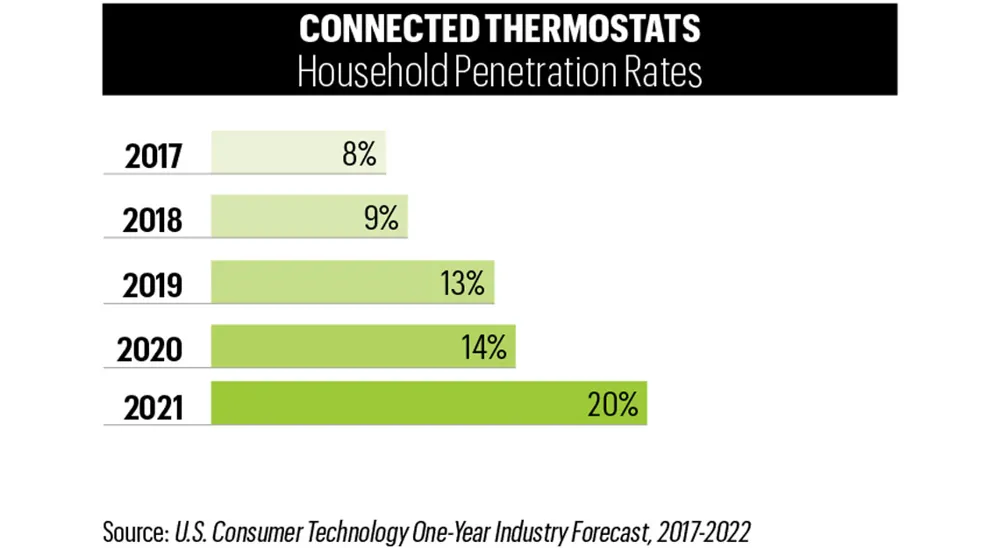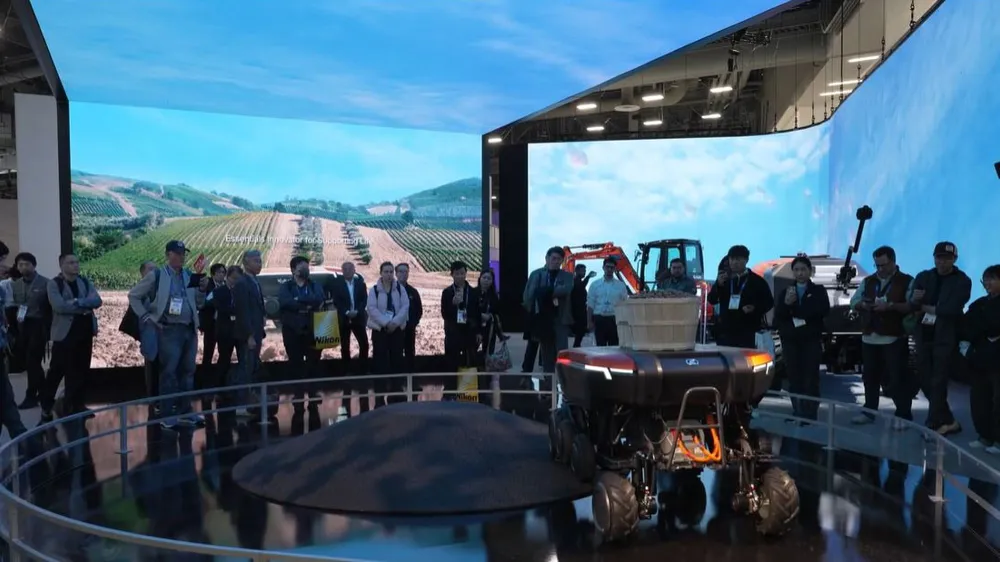Three Technologies to Reduce Consumers’ Carbon Impact
June 14, 2022
- Author: Bobby Baumler
In recognition of UN World Environment Day on June 5, 2022, CTA highlights three technologies that promote a sustainable future.
Anthropogenic climate change is observed through rising sea levels, increasing temperatures and extreme weather events. Last year, 2021 marked the sixth warmest on record and the most recent decade set a record as the hottest for a ten-year time span in history. At last fall’s United Nations Climate Change Conference (COP26), leaders stressed the need to halve emissions over the next decade to reach net zero carbon emissions by the middle of the century. Fortunately, consumers seeking to reduce their carbon footprint have access to technologies ranging from plug-and-play connected thermostats to installed solar energy and fully electric vehicles.
Identifying Sources
To combat climate change, an understanding of where greenhouse gases originate is essential. Notably, the abundance of greenhouse gas (GHG) emissions occurs from human activity including agriculture, energy, transportation and waste. The use of energy in industry accounts for over 24% of global GHG emissions, followed by commercial and residential buildings contributing nearly 18%, transportation at over 16% and livestock at nearly 6% of global GHG as reported by Climate Watch. For consumers, reductions in automotive and home energy consumption offer tangible areas to reduce carbon emissions.
1. Connected Thermostats
For most households, heating and cooling represents roughly 43% of total energy expenses according to the Environmental Protection Agency (EPA). The Energy Department estimates that households can save 10% annually by lowering their thermostat when not at home. Consumers seeking an easy solution can install a connected thermostat to ensure comfort and optimize energy usage. CTA’s U.S. Consumer Technology One-Year Industry Forecast (January 2022) forecasts shipments of connected thermostats to increase 11% in 2022, reaching over 3.6 million units. All told, CTA estimates 20% of households have installed a connected thermostat.

2. Solar Energy
As renewables constitute just over a fifth of power generation in the U.S., the installation of residential solar panels makes an immediate impact in reducing reliance on fossil fuels. A Pew Research survey estimated 6% of U.S. homeowners have installed solar panels and an additional 46% of households are seriously considering installing panels. CES 2022 showcased numerous advancements in solar technology including solar energy shingles that are installed like traditional asphalt shingles. Collectively, consumers and utilities are projected to double the share of renewables between now and 2050 to 42% as estimated by the U.S. Energy Information Administration (EIA). Further, the Solar Energy Industries Association forecasts that 46% of new generating capacity originates from solar energy.
3. Electric Vehicles
The transition from internal combustion propulsion to electric vehicles by consumers is paramount to reducing net emissions as passenger cars comprise 41% of all transportation related GHG as tabulated by the University of Michigan Center for Sustainable Systems. In 2021, electric vehicles exceeded 10 million globally and accounted for an estimated 4.5% share of the total new car market as highlighted by the International Energy Agency. According to Gartner, electric vehicle shipments approached 4.5 million globally, representing growth in a supply chain constrained automotive market. The study projects 35% growth this year with electric vehicle shipments exceeding six million cars. By 2050, the EIA forecasts electric vehicles will reach 31% of the global light-duty vehicle fleet, reaching 672 million vehicles.
As sustainable technology adoption by consumers augments investments by businesses, industry and utilities, the prospects for achieving COP26’s net zero vision remains in sight.
Join our community of innovators and shape the future of technology.



